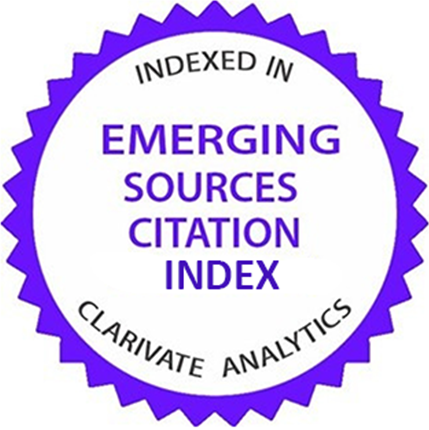Predisposing Factors of Seizure in Patients Presenting to the Emergency Department; a Brief Report
Abstract
Introduction: Identifying predisposing factors of seizure can be somewhat helpful in preventing it from occurring. Objective: The present study has been designed aiming to assess the frequency of predisposing factors of seizure in patients visiting the emergency department (ED). Methods: The present prospective cross-sectional study was performed on adult patients presenting to ED following seizure during 1 year. Known or probable predisposing risk factors for seizure were extracted from various studies and were asked from patients or their relatives during history taking and clinical examination. Results: Finally, 246 seizure patients with the mean age of 38.8 ± 18.3 (18 – 92) years were included (68.7% male). Most patients were in the 18–29 years age group (41.1%), had an educational level less than high school diploma (59.8%), and were unemployed (47.8%). Among the predisposing factors of seizure, emotional stress with 107 (43.7%) cases, insomnia with 44 (17.9%), and irregular use of antiepileptic medications with 36 (14.6%) cases were the most common predisposing factors, respectively. In 43.5% of the patients, no identified predisposing factor was found. Insomnia (p = 0.002), stress (p < 0.001), and substance abuse (p < 0.001) were the most important predisposing factors of seizure in individuals less than 60 years old. In addition, being in the menstruation period was also shown to be a predisposing risk factor for women aged less than 60 years (p = 0.002). Conclusion: Emotional stress, insomnia, and irregular use of antiepileptic medication were the most important predisposing factors of seizure in the studied patients. In more than 40% of patients presenting to ED following seizure, no predisposing factor was found.
2. Kasmaei HD, Shabani F, Baratloo A. Meningioma Induced Temporal Lobe Epilepsy; A Case Report. Arch Neurosci. 2015;2(2):e21644.
3. Baratloo A, Safari S, Rouhipour A, Hashemi B, Rahmati F, Motamedi M, et al. The Risk of Venous Thromboembolism with Different Generation of Oral Contraceptives; a Systematic Review and Meta-Analysis. Emergency. 2014;2(1):1-11.
4. Rizvi S, Ladino LD, Hernandez-Ronquillo L, Téllez-Zenteno JF. Epidemiology of early stages of epilepsy: Risk of seizure recurrence after a first seizure. Seizure. 2017;49:46-53.
5. Zima LA, Tulpule S, Samson K, Shonka N. Seizure prevalence, contributing factors, and prognostic factors in patients with leptomeningeal disease. J Neurol Sci. 2019;403:19-23.
6. Kasteleijn‐Nolst Trenité DG. Provoked and reflex seizures: surprising or common? Epilepsia. 2012;53(s4):105-13.
7. Balamurugan E, Aggarwal M, Lamba A, Dang N, Tripathi M. Perceived trigger factors of seizures in persons with epilepsy. Seizure. 2013;22(9):743-7.
8. dos Santos Lunardi M, Sukys-Claudino L, Guarnieri R, Walz R, Lin K. Seizure precipitants and inhibiting factors in mesial temporal lobe epilepsy. J Neurol Sci. 2011;308(1):21-4.
9. Thapar A, Kerr M, Harold G. Stress, anxiety, depression, and epilepsy: investigating the relationship between psychological factors and seizures. Epilepsy Behav. 2009;14(1):134-40.
10. Sani MP, Ebrahimpur M. A Case of Cerebral Venous Sinus Thrombosis Presenting with Delirium. Adv J Emerg Med. 2019;3(1):e11.
11. Guaranha MSB, Da Silva Sousa P, Araújo‐Filho D, Maria G, Lin K, Guilhoto LMFF, et al. Provocative and inhibitory effects of a video‐EEG neuropsychologic protocol in juvenile myoclonic epilepsy. Epilepsia. 2009;50(11):2446-55.
12. Frucht MM, Quigg M, Schwaner C, Fountain NB. Distribution of seizure precipitants among epilepsy syndromes. Epilepsia. 2000;41(12):1534-9.
13. Tan J-H, Wilder-Smith E, Lim EC, Ong BK. Frequency of provocative factors in epileptic patients admitted for seizures: a prospective study in Singapore. Seizure. 2005;14(7):464-9.
14. Breen D, Dunn M, Davenport R, Gray A. Epidemiology, clinical characteristics, and management of adults referred to a teaching hospital first seizure clinic. Postgrad Med J. 2005;81(961):715-8.
15. Kim KB, Kim SM, Park W, Kim JS, Kwon SK, Kim H-Y. Ceftiaxone-induced neurotoxicity: Case report, pharmacokinetic considerations, and literature review. J Korean Med Sci. 2012;27(9):1120-3.
16. Pedersen L, Petersen M, Søndergaard I. Seizure triggered by benzodiazepine receptor antagonist. Ugeskr Laeger. 2009;171(23):1942-3.
17. Farajidana H, Hassanian-Moghaddam H, Zamani N, Sanaei-Zadeh H. Tramadol-induced seizures and trauma. Eur Rev Med Pharmacol Sci. 2012;16(Suppl 1):34-7.
| Files | ||
| Issue | Vol 4 No 4 (2020): Autumn (October) | |
| Section | Brief report | |
| Keywords | ||
| Causality Emergency Service, Hospital Prevention and Control Risk Factors Seizures | ||
| Rights and permissions | |

|
This work is licensed under a Creative Commons Attribution-NonCommercial 4.0 International License. |










